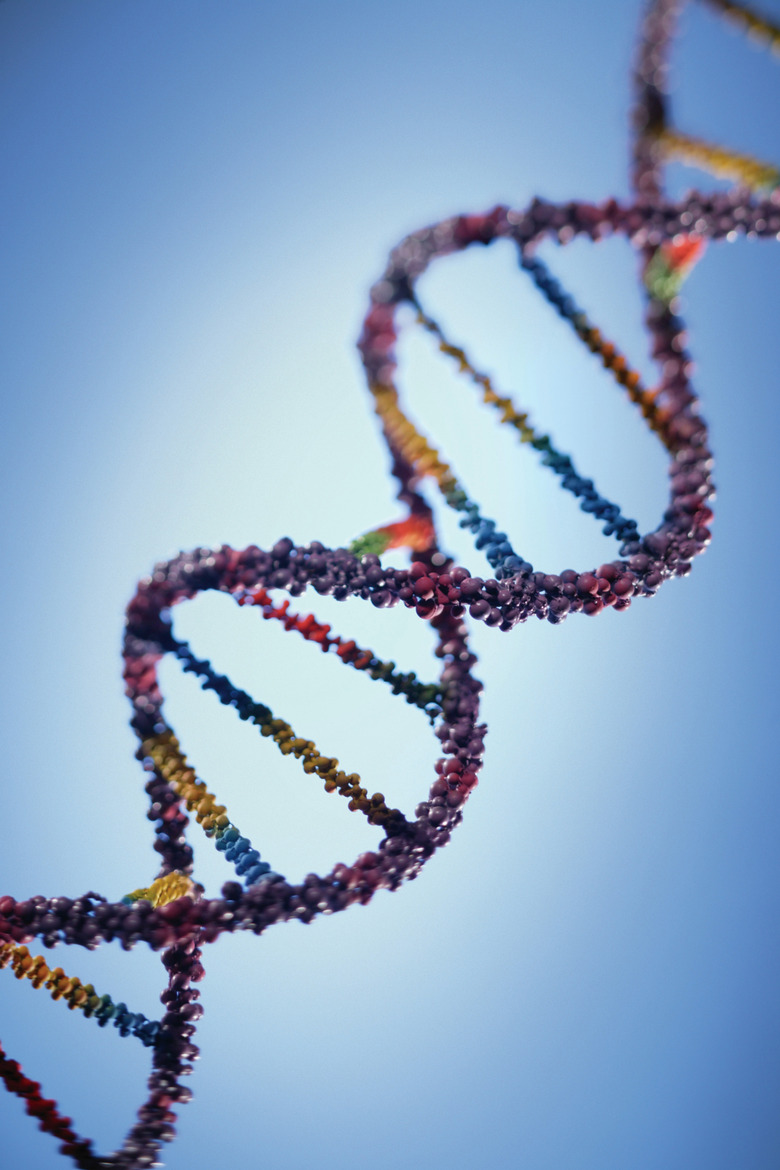What Is The Purpose Of The Promoter & Terminator Region Of The DNA Molecule?
DNA has two functions critical for living organisms: it carries genetic information from one generation to the next and it directs the operation of just about every cell in the body. It directs those operations by sending out instructions to make proteins.
Those proteins are the worker molecules that do the jobs necessary to contract your muscles or let your eye detect light. The promoter and terminator regions of DNA are there to make sure the right proteins are built in the right place and at the right time.
Proteins
Proteins
The bodies of living creatures consist of cells. Within those cells there are sugars and other carbohydrates, lipids and proteins. In plants, the sugars define a lot of the structure and function of the cells, but in animals, it's the proteins that do just about all the work.
The differences between a cell in a porcupine and a cell in a human are in the proteins, and the difference between a bone cell and a skin cell in a human are in the proteins. DNA contains all the information necessary to build all the proteins in an organism.
DNA and Proteins
DNA and Proteins
The pattern of the bases in DNA contains the code for building the right proteins. But the pattern also contains instructions for where to start and stop building a protein.
The start and stop instructions are called the promoter and terminator regions. A single DNA molecule contains the instructions to make many different proteins, and each protein has a promoter and terminator sequence and region.
Right Time, Right Place
Right Time, Right Place
The promoter regions of DNA do not change — they're always there, signaling that the instructions for making a protein start there. But every protein doesn't get made in every cell, nor do they get made all the time. The presence of certain conditions in the cell will trigger the generation of small molecules called transcription factors and transcription units.
When about 50 different transcription factors bind to the promoter region, they trigger DNA to make the protein. Some transcription units and factors will only be in liver cells, for example, and some will only be free to latch on to the promoter region when a particular protein population in a cell drops below a certain level.
So the transcription units/factors will only be there if it's the right place and right time for that specific protein to be built.
RNA Polymerase and the Terminator Sequence
RNA Polymerase and the Terminator Sequence
DNA makes proteins by sending instructions out to another part of the cell to start building. It sends instructions with another molecule called mRNA.
When transcription factors bind to the promoter, a big "factory" molecule called RNA polymerase grabs onto the DNA and starts building an mRNA molecule. RNA polymerase travels along the DNA, building the mRNA step-by-step.
It doesn't stop until it reaches the termination site or terminator sequence. When the RNA polymerase makes it to the terminator sequence, it will let go of the DNA and stop building the strand of mRNA.
The mRNA — with a full set of instructions for making the right protein — is then released. Other molecules will use this set of instructions to build the protein right when and where it's needed.
Cite This Article
MLA
Gaughan, Richard. "What Is The Purpose Of The Promoter & Terminator Region Of The DNA Molecule?" sciencing.com, https://www.sciencing.com/purpose-promoter-terminator-region-dna-molecule-4006/. 7 May 2019.
APA
Gaughan, Richard. (2019, May 7). What Is The Purpose Of The Promoter & Terminator Region Of The DNA Molecule?. sciencing.com. Retrieved from https://www.sciencing.com/purpose-promoter-terminator-region-dna-molecule-4006/
Chicago
Gaughan, Richard. What Is The Purpose Of The Promoter & Terminator Region Of The DNA Molecule? last modified March 24, 2022. https://www.sciencing.com/purpose-promoter-terminator-region-dna-molecule-4006/
